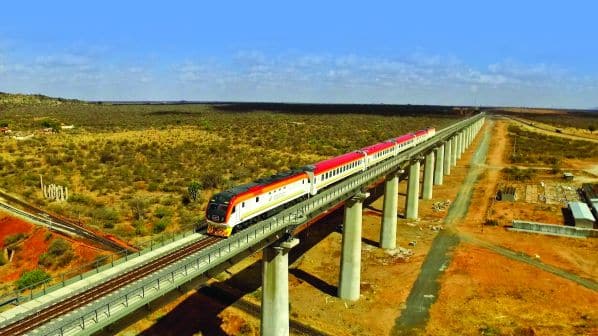BUILDING some 192,000km of new railways in low and lower middle-income countries could save up to 1.8 billion tonnes of CO2 emissions by 2050, or 5% of all CO2 emissions in 2022, according to the new report Bridging the rail finance gap: challenges and opportunities for low and lower middle-income countries prepared jointly by the International Union of Railways (UIC), the University of Birmingham, Alstom, and Roland Berger.
Such investment would cost an estimated $US 80bn per year during the period, but as this would also create jobs and improve lives in those countries at a lower cost than other options, high-income countries should divert some of their climate change spending towards them, the report says, arguing that even if only a third of that amount was spent on new railways, the benefits would still be substantial.
“This study… clearly demonstrates how targeted investments and strategic planning in rail systems in low-income and lower middle-income countries can lead to substantial CO2 reductions and support sustainable development,” says Ms Cécile Texier, Alstom’s vice-president for CSR and sustainability.
At present, high-income countries have an average railway network density 10-times that of low and lower middle-income countries, the majority of which are found in Africa and southern Asia. Meanwhile, these countries only account for 17% of the world’s transport-related emissions, while housing half of the global population. Should their transport emissions increase by the same rate as in richer countries, without any substantial railway investment global CO2 emissions could soar by 16%, or an additional 8.5 billion tonnes per year, the report finds.
Finding itself at such a crossroads, the report concludes that the global community should become diligent in increasing funding for railway construction in poorer countries by all means necessary. It lists a number of recommendations as to how this should be done. One is to allow rail construction in poorer countries to be funded under Article 6 of the Paris Agreement, generating carbon credits that would in turn be sold to richer countries.
Meanwhile, financial institutions should widen cost:benefit analysis to take into consideration aspects such as the longer life of new railways when compared with other infrastructure investment projects, or improved livelihoods for local communities. However, the countries in question also need to understand the significance of investing in railways, and work together with the railway industry in doing so, the report says.
“This whitepaper shows that economic benefits of railways are not adequately captured in financial models,” says UIC director general, Mr François Davenne. “It is time to level up finance and grant [low and lower middle-income countries] with the tools to advance sustainable development, without further comprising the financial health of their economies.”
The full report can be downloaded here.

